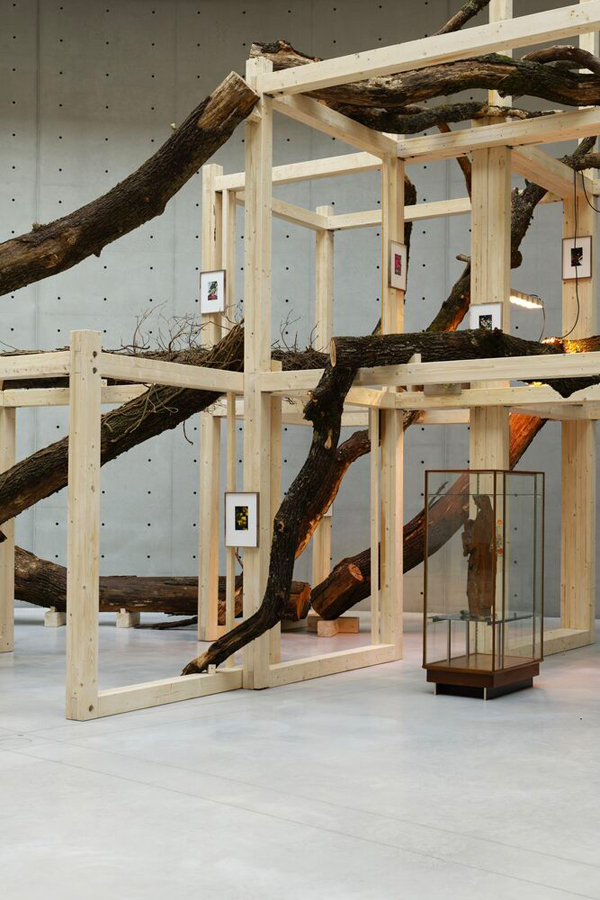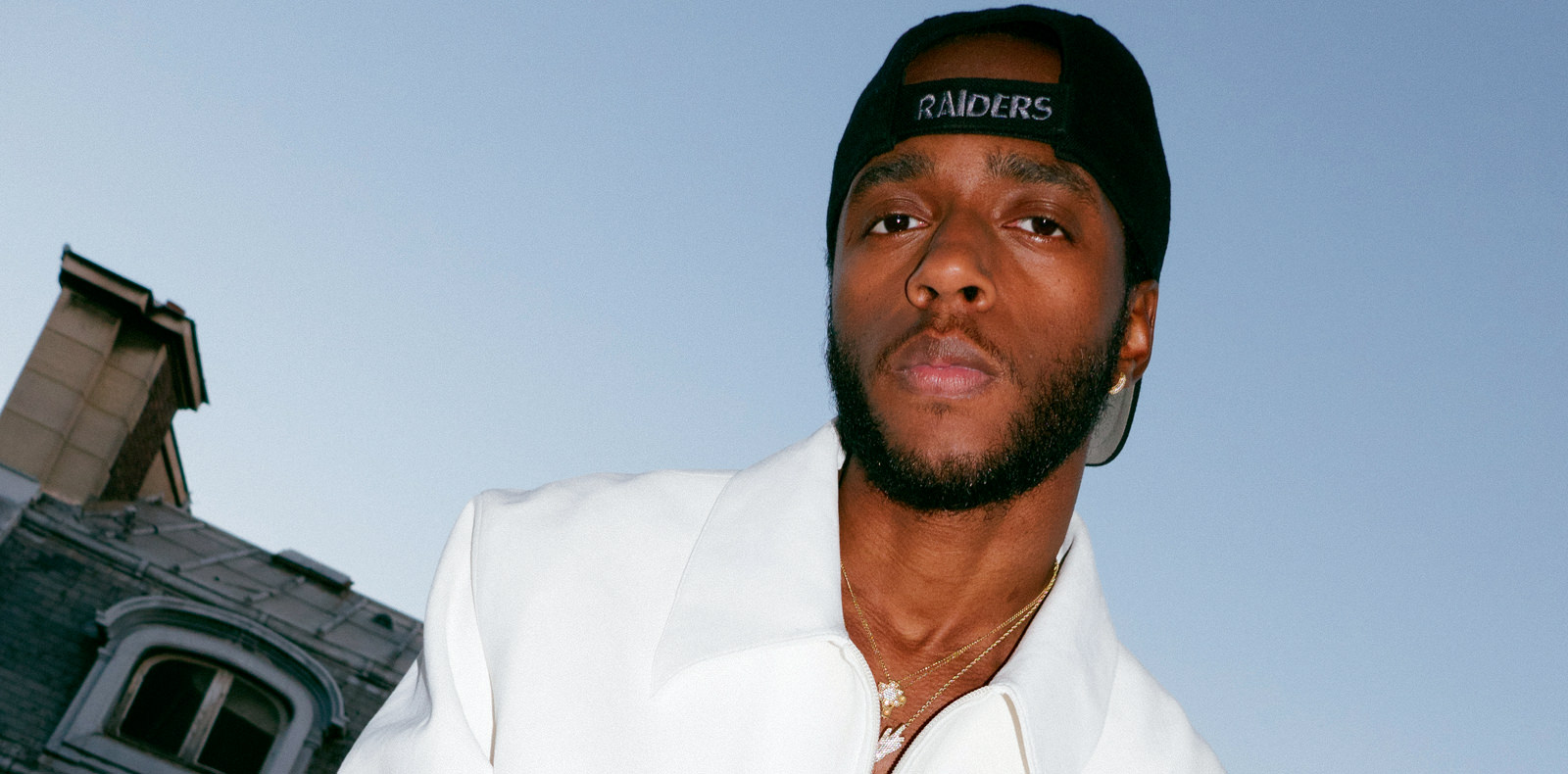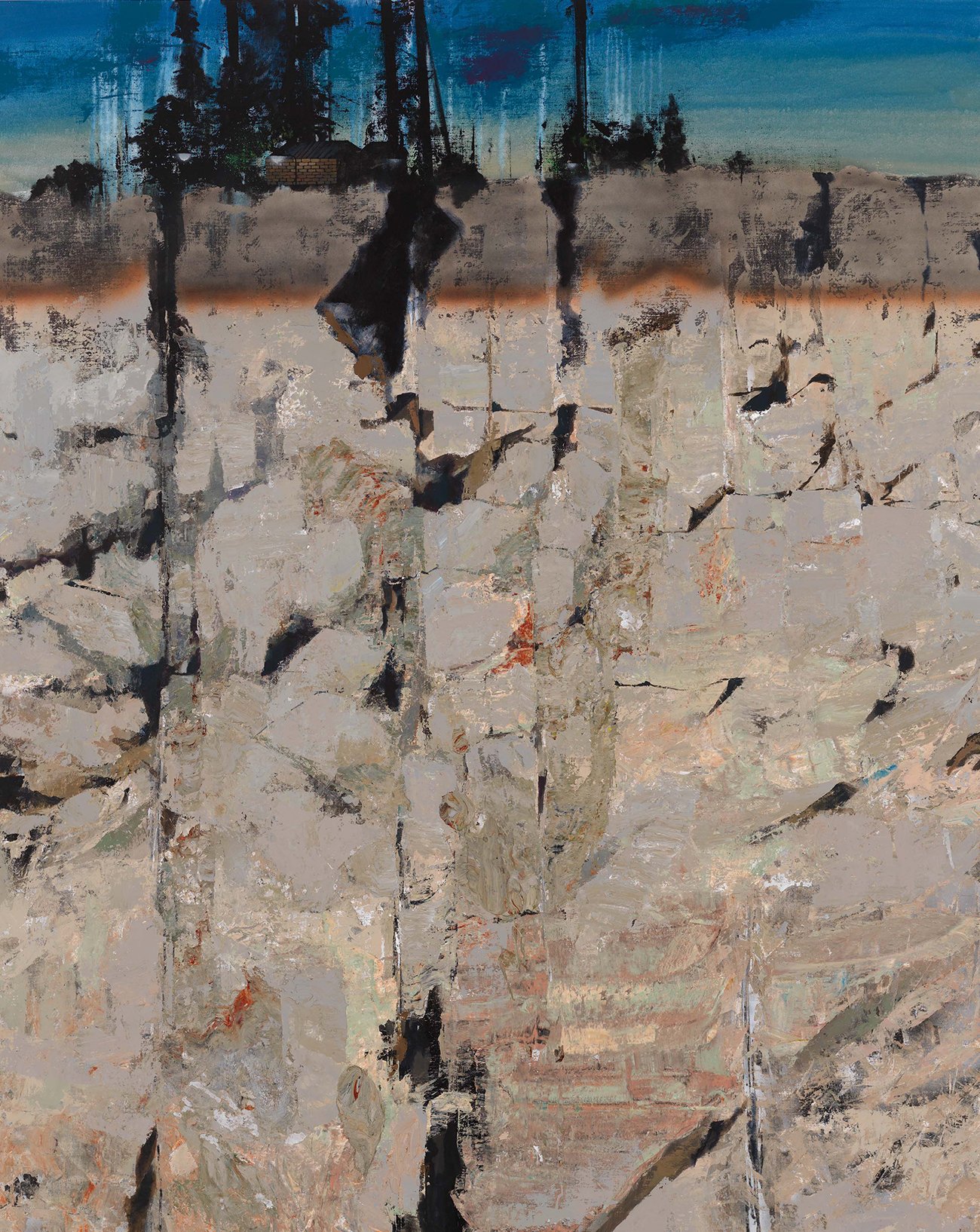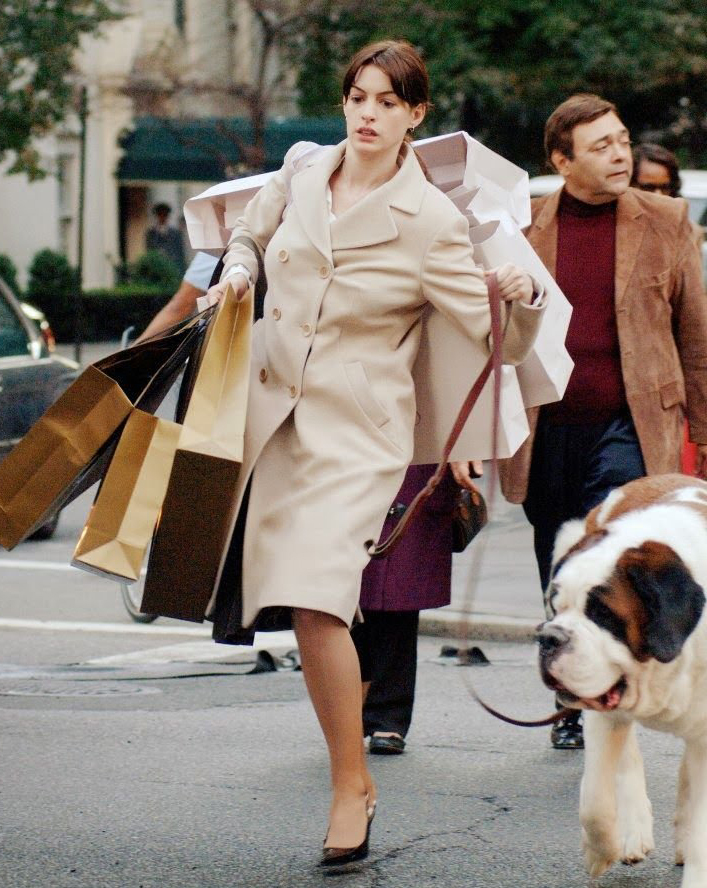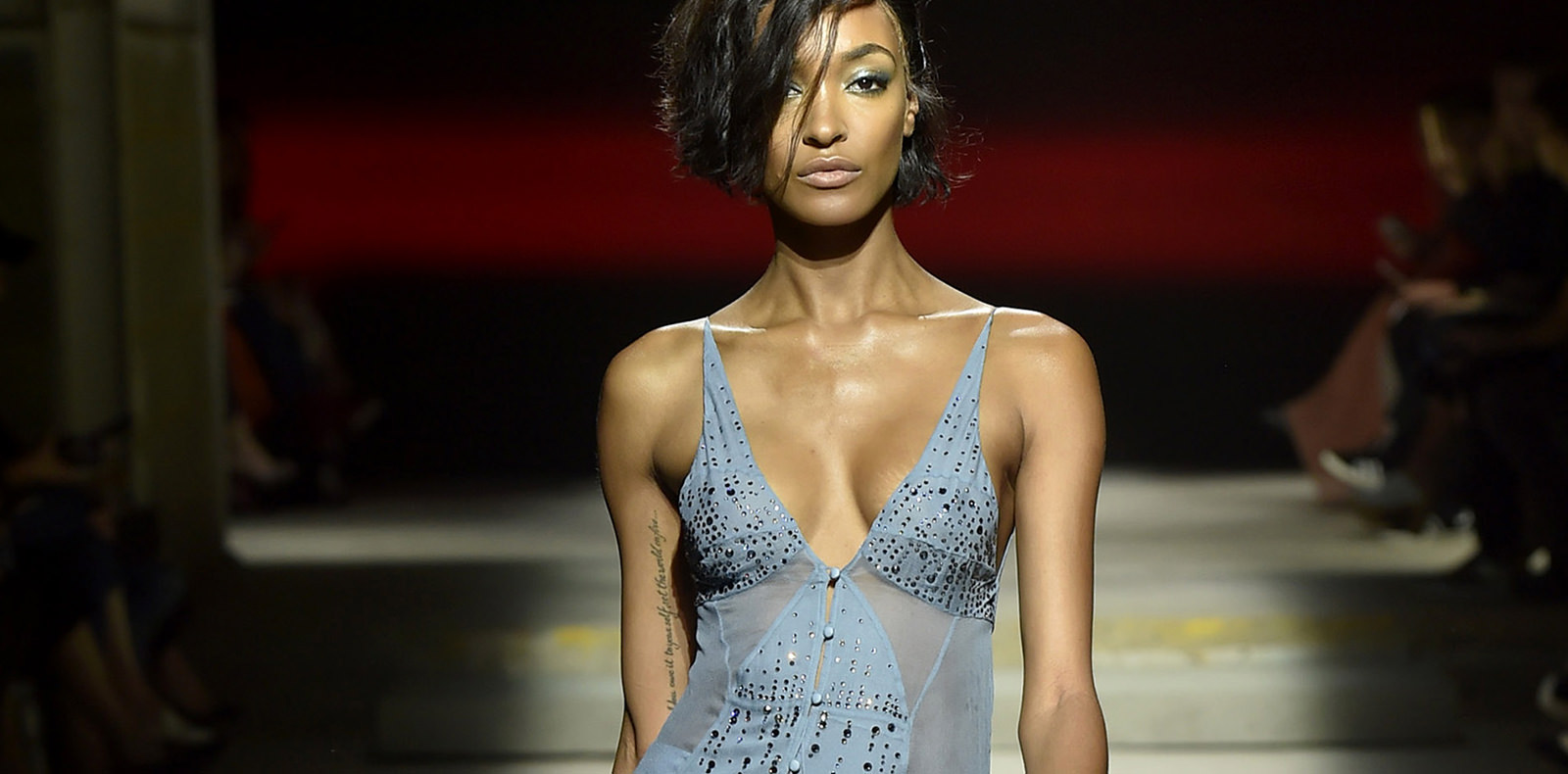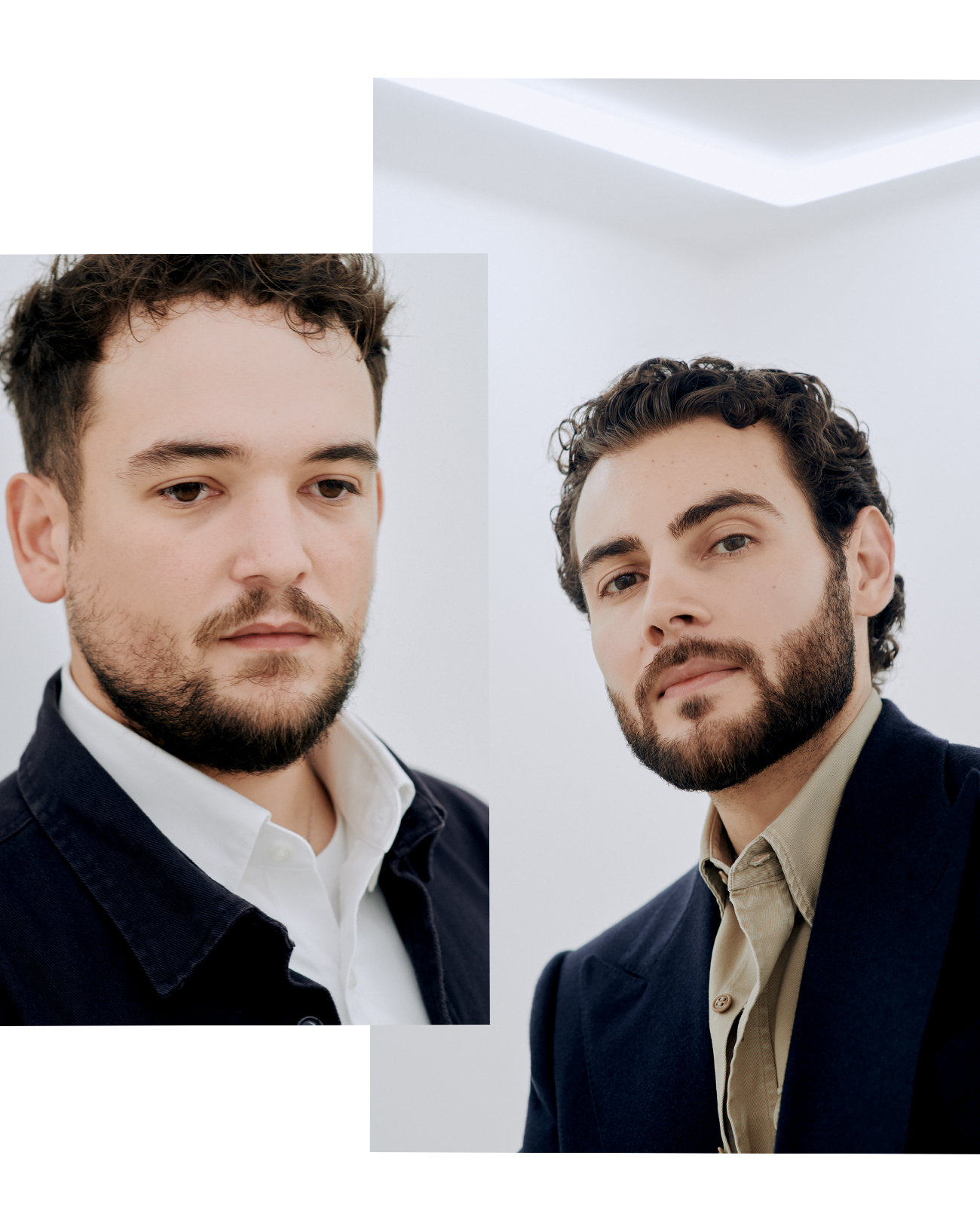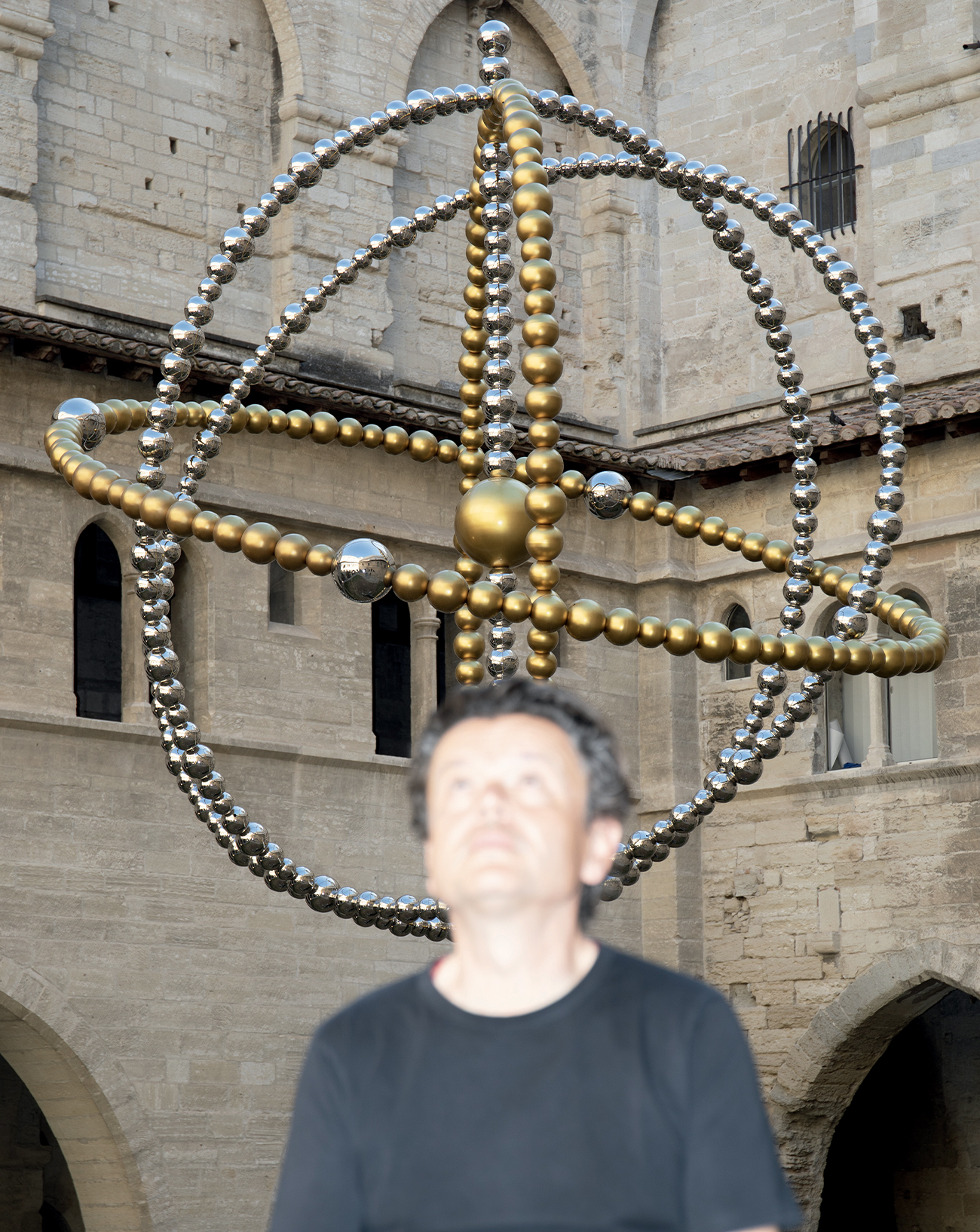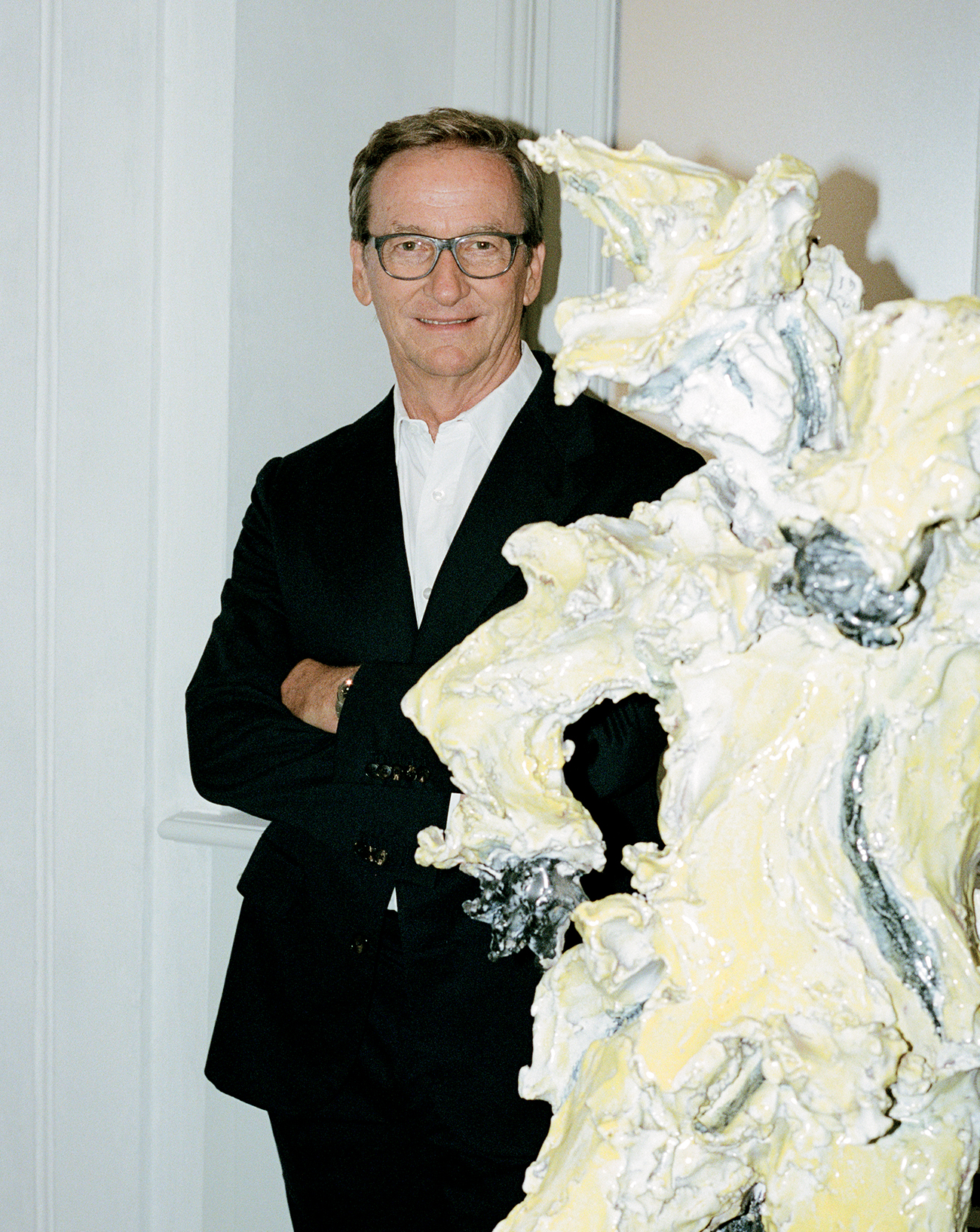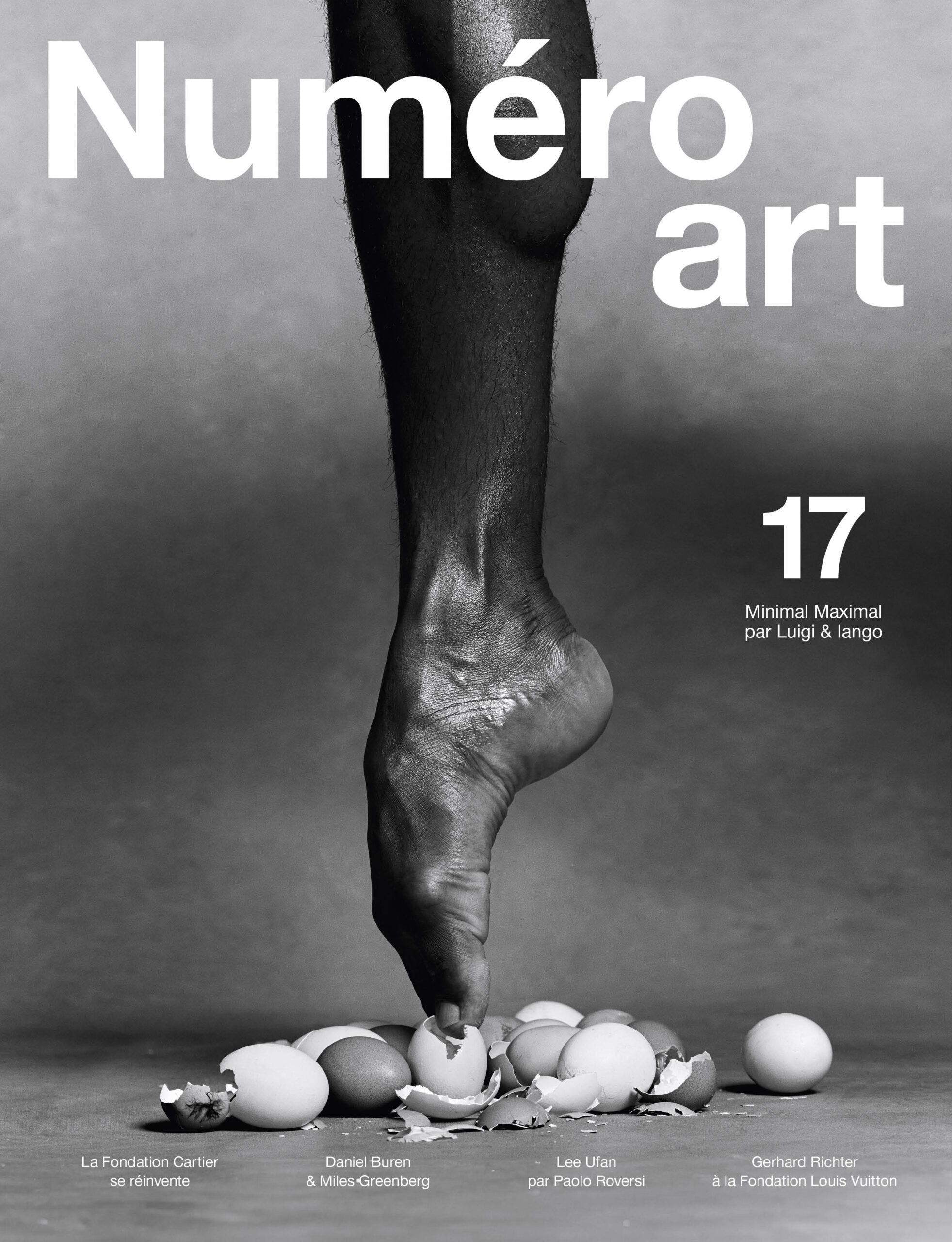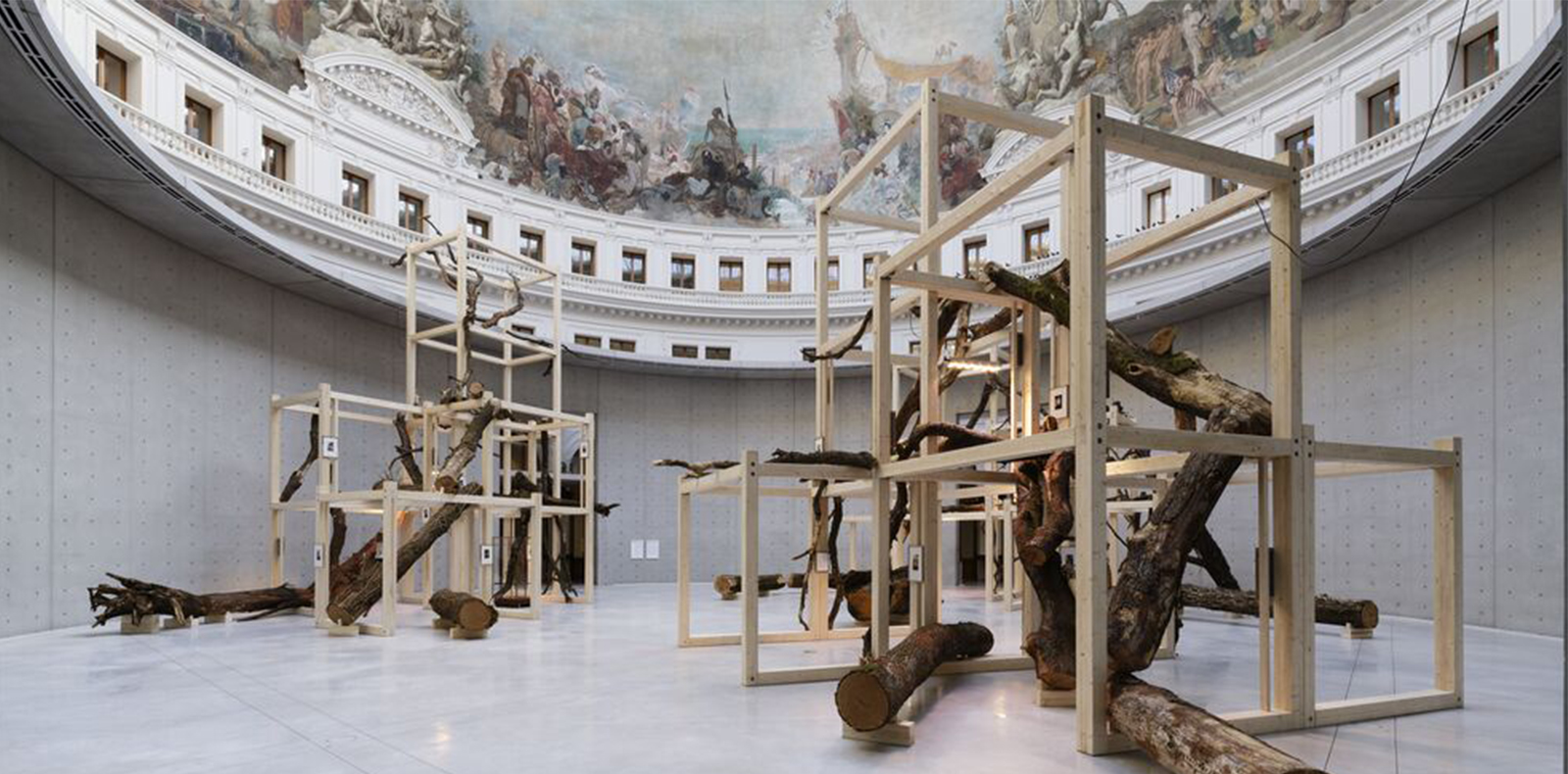
22
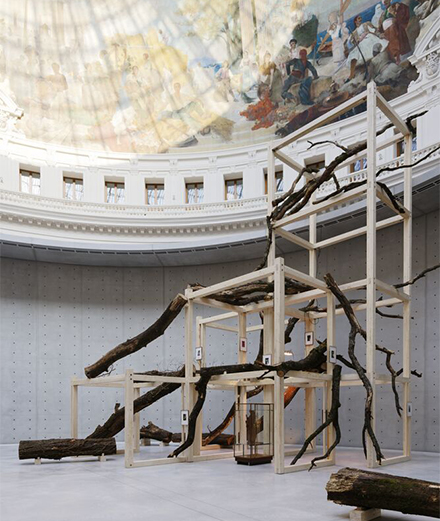
22
Trees struck by lightning brought back to life by artist Danh Vo at the Bourse de Commerce
The Vietnamese-born Danish artist is taking over the monumental rotunda of the Bourse de Commerce until the end of April. Invited by the Pinault Collection, Danh Vo has installed impressive weatherworn tree trunks to open a conversation about our relationship with nature…
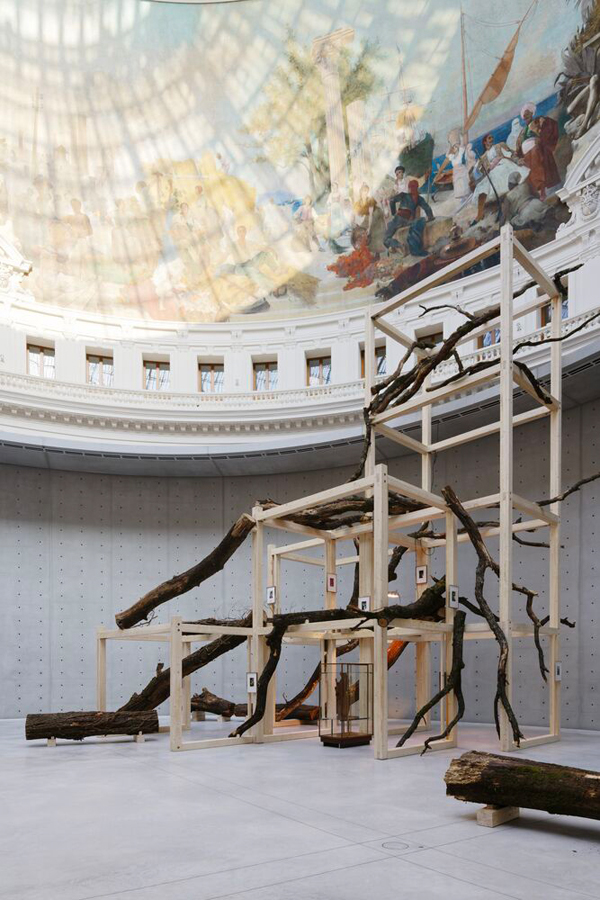
In the middle of the rotunda located under the impressive glass roof at the Bourse de Commerce, weatherworn tree trunks are soaring into the sky in an ultimate and desperate move for survival. Installed by the artist Danh Vo as a monumental bouquet matching the dimensions of the space, these trees unfold through the most unexpected mutations in their death. They bloom, yet their flowers appearing in scattered, colorful, and seductive touches on the installation are photographs taken and arranged by the artist. Death being a great breeding ground, the blossoming of the corpse foreshadows other surprises, such as the presence of previous works by the artist – mostly wooden sculptures – that curl up or unite to the trunks like a myriad of grafted branches. This bouquet of trees forms a paradoxical artwork, both mortifying and fragile, with hope and resilience to support it – and more prosaically with timber structures to support the martyred trunks. “An experience in which beauty and threat are intertwined in the same space”, curator Caroline Bourgeois summarizes.
“An experience in which beauty and threat are intertwined in the same space”, curator Caroline Bourgeois summarizes.
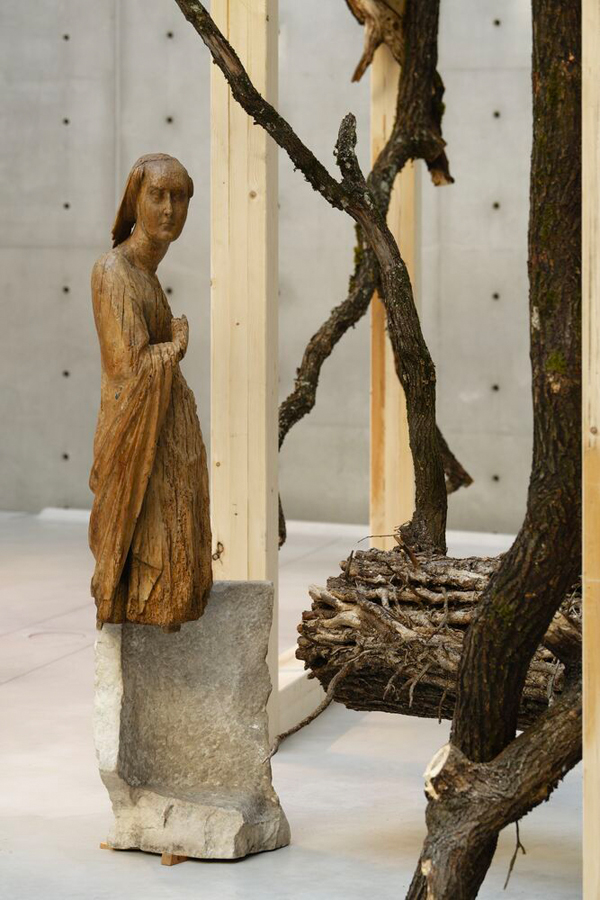
Danh Vo invited for the exhibition “Avant l’orage” at the Bourse de commerce
In a way, the artwork stands as a philosophical manifesto on the new direction taken by the artist in his work. For some years now, Danh Vo has been living in a farm-studio in Güldenhof, Germany. Amid an orchard, a greenhouse, meadows, and gardens, he is working on reuniting the meanings of the word “culture”. The care taken in nature’s development, symbolized by the garden and the orchard, echoes the care taken in the wounded nature represented by the trees exhibited at the Bourse. He also develops his knowledge of nature, in this case of the flowers in his garden, which he meticulously captures with his camera along with handwritten captions of their scientific names. The origin of the series of photographs of flowers at the Bourse de Commerce comes from that, but the pictures have been taken at a florist this time. Conversely to the traditional dichotomy in our Western culture, Danh Vo thwarts the opposition between nature and culture. As a perfect embodiment of the cultural object, art finds its cradle in nature. The artist first started to play with historical sculptures, often wooden church items, he installed in the space of his garden in Güldenhof. There, they would reconnect with their fundamental nature.
Nothing is completely natural, yet nothing is completely cultural as well at the Bourse de Commerce. The tree trunks have been treated to be put on display and have been installed according to the artist’s choices. The structures that support them, the artworks that seem to grow out of them like appendages, and even the frames of the photographs, are made of the same wood, even if the origin of this wood differs (I will come back to that later). Nature and culture thus shape each other in an infinite life and death cycle. The environment unfold by Danh Vo also reverses the horizontality of classical landscape painting seen from a human perspective. The cluster of trees looks disorganized and moves in all directions. People can walk through it without ever being able to encompass it solely from their viewpoint. Although a human structure may persist, that of the construction timber used to support the installation, it only seems to be here as a supporting and healing prop, intentionally devoid of any desire to impose its power. The decentering is complete. If nature is being domesticated, it is because we share the same home, the same domus with it.
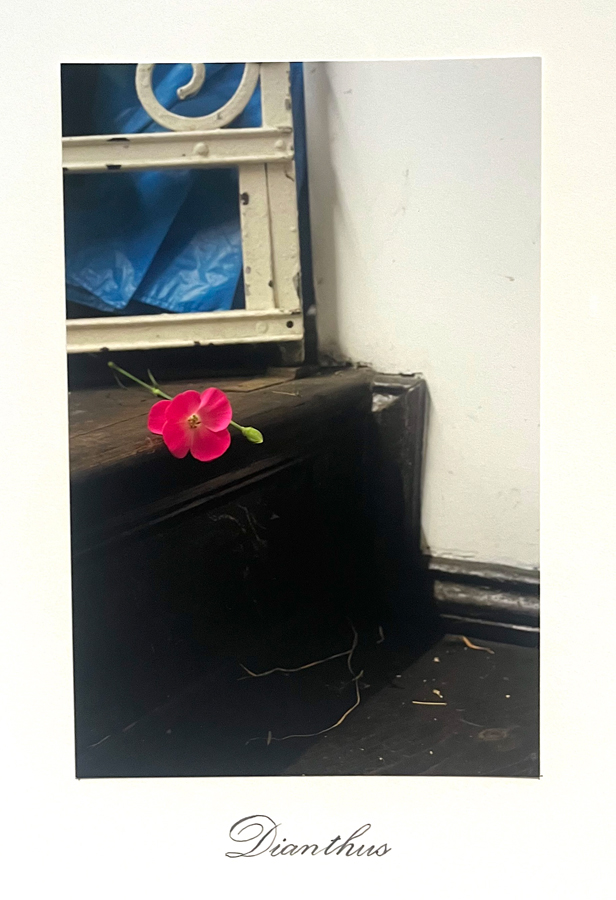
Danh Vo when great history and intimacy intertwine
As a Danish artist of Vietnamese origin, Danh Vo fled his country by boat with his Catholic refugee parents in 1979. This landmark event will eventually nourish a body of works pervaded by the ideas of displacement and decentering, as well as a clear understanding of the complex strata of history, as his major exhibition at the Guggenheim in New York shows. Since then, Danh Vo has been developing his pieces from fragments that he moves and assembles to manifest relationships rather than to judge them. An approach that curator Caroline Bourgeois coins as “make do” – “make do with what we carry with us and what we find, make do with all the contradictions surrounding us and within us.” Danh Vo thus does make do with these tree trunks struck by lightning in the French forests, as well as with the hazards of life and of his personal story. The same idea applies to the wood that forms the foundation of the building structures and frames in the exhibition. A few years ago, Danh Vo discovered that the son of Robert McNamara, US Secretary of Defense under Kennedy and mastermind behind the Vietnam War that his family had fled from, owned a sustainable farm in California. He bought his black walnut wood. In 2012, he also bought some of Robert McNamara’s objects at an auction to include them in his exhibitions. Geopolitical and personal histories were therefore intertwined in a dual move of displacement from the political to the artistic, and reappropriation of objects. Objects reinvest their stories with Danh Vo. They are reactivated, dissected, and reassembled to reveal all their dimensions beyond their function and aesthetic, without dissociating family from politics, story from history.
Tropeaolum, an installation by Danh Vo at the Bourse de Commerce – Pinault Collection, Paris, until April 24th.
